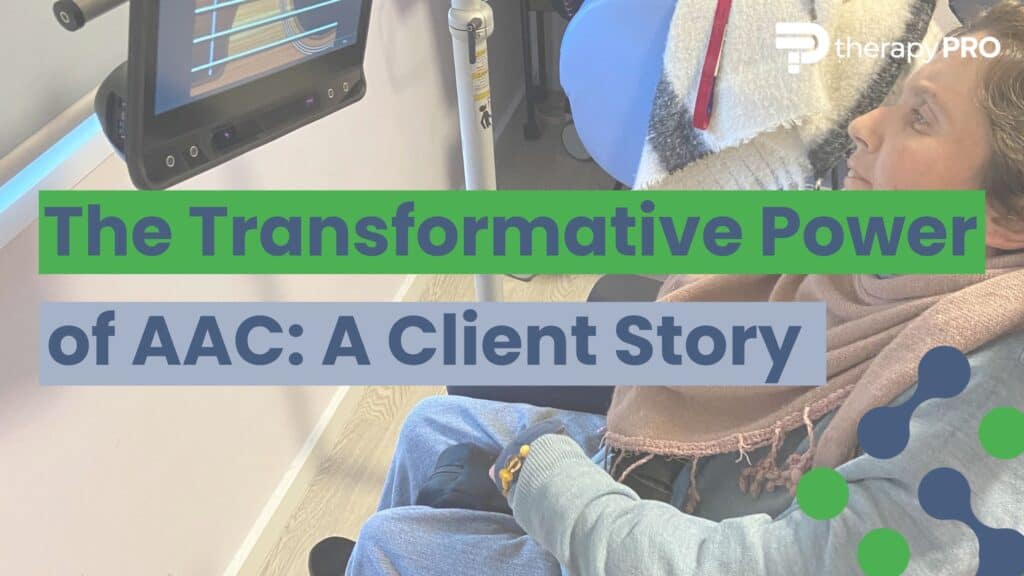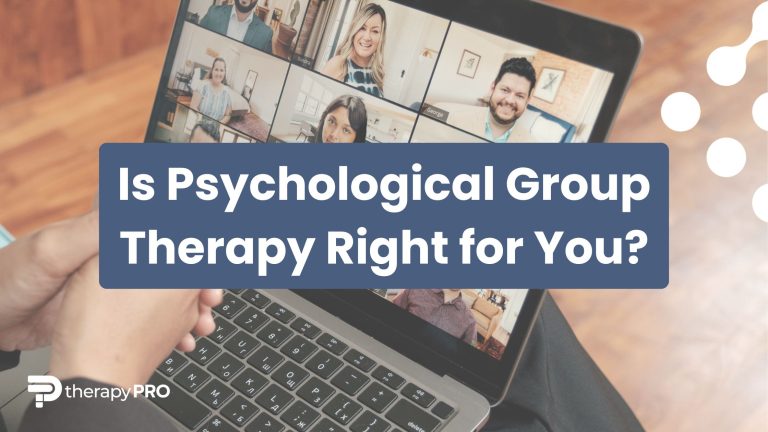Transformative Power of Augmentative Alternative Communication: A Journey with Maree
In the world of allied health, the use of Augmentative Alternative Communication (AAC) is a powerful tool that can help people with disability to have better choice and control and gain greater independence in their lives.
Something that our Therapy Pro therapists work towards with their clients, each and every day.
For individuals – from young children, through to adults and the ageing – with communication challenges, AAC strategies and devices can unlock a world of interaction, understanding, and self-expression.
In this article, we’re going to explore AAC in the context of various allied health disciplines along with the role multidisciplinary teams play in implementing AAC.
We’re also going to share a client story where the use of an AAC device transformed the client’s life, providing her with greater choice and control as she worked towards her goal of gaining more independence.
Let’s begin by taking a closer look at what AAC is.
What is Augmentative Alternative Communication (AAC)?
AAC is a broad term used to describe various methods of communication that can assist those who are unable to use verbal speech.
Speech Pathology Australia states:
“AAC is when a person uses something other than speech to communicate. They might use body movements or gestures. They might use sign language or a computer or device. They might use communication books or other printed material.”
AAC aims to augment or replace speech or writing for individuals with speech-language impairments. Many people use AAC to communicate, and for varying lengths of time. This can include when people have:
- an intellectual disability
- autism
- motor difficulties
- disability caused by neurological conditions, or
- surgery
AAC in the context of Allied Health Disciplines
As you might imagine, AAC can play a transformative role for many people requiring support. A speech language pathologist and an occupational therapist are key when it comes to implementing AAC strategies, tools, or technologies.
Let’s look at each in a little more detail.
Speech and Language Pathology
Speech and language pathologists have a vast array of experience that equips them to support a wide range of communication, swallowing, and feeding disorders. Here at Therapy Pro, our speechies provide education for clients and the people who support them, as well as the highest standard of care to achieve lasting outcomes.
Speech and language pathologists evaluate an individual’s communication skills, then recommend and train them in how to use appropriate AAC methods, from simple symbol charts to advanced technology.
Occupational Therapy
Occupational therapists support their clients to do the things they need and want to do in all aspects of life: to participate more in the ‘everyday’ and realise greater independence. OTs support you in growing your capacity to care for yourself and others, to work and to connect with your community.
In the context of AAC, OTs can ensure that their client has the physical ability to use the chosen communication method – whether that’s adjusting to an eye gaze system, a button or a switch, or a communication book.
The Role of Multidisciplinary Teams in Implementing AAC
The integration of AAC within a client’s communication strategy often requires a collaborative approach from a multidisciplinary team.
This means that the therapists involved in a client’s care plan – whether that is through the NDIS or not – work together with other people in the client’s lives to ensure that the AAC strategies and technologies are consistent.
This might look like a speech pathologist working in collaboration with an occupational therapist to ensure an AAC device can be effectively used from a physical point of view.
The therapy team then also needs to ensure that the AAC device can be used across different environments (home, school, therapy, community) and that everyone in the healthcare team, from family members through to educators and support workers, know how to use the device to best support the client’s communication goals.
How Augmentative Alternative Communication Transforms Lives: Maree’s Story
To truly understand the life-altering potential of AAC, let’s turn to a success story, where AAC facilitated a shift in Maree’s life.
Maree, a 42-year-old woman with Rett syndrome, had her world transformed with the aid of an AAC device. Before the intervention by a multidisciplinary team at Therapy Pro, Maree’s primary mode of communication was through facial expressions and eye movements.
However, Maree aimed for greater independence, and more opportunities to participate in her home and day program. Her communication goals were to make choices and communication her thoughts, feelings, and needs.
In working with her healthcare team, Amy Coleman, Lead Speech and Language Pathologist at Therapy Pro, initiated an eye gaze communication device trial for Maree.
With the device, Maree began interacting with the world in ways she hadn’t before. She showed signs of functional use by engaging in games, making choices, and immersing herself in music. During her music group and at a day program, she can use eye gaze to strum the guitar and choose which nail polish colour she would like while on a pampering day.
Maree’s mother, Ruth, expressed her joy at seeing Maree’s newfound communication skills:
“The day after Maree tried the eye gaze device for the first time, I asked her if she enjoyed looking at the device and seeing things move. She instantly looked at “yes”. I then asked her would she like to do that again. She instantly looked at “yes” and showed a little smile. It is so good to see her being able to activate various things on the screen by using her eyes.”
Maree’s story serves as a testament to the transformative power of AAC and the invaluable role allied health professionals play in empowering individuals with communication challenges.
The integration of AAC within the framework of occupational therapy and speech and language pathology is not just a clinical intervention. It supports connection, self-expression, and most importantly offers choice, control, and independence in the lives of those who need it most.
Looking for Speech and Language Support?
If you’re looking for support with a speech-language challenge, whether for yourself, a family member, or client, reach out to our team and we will connect you with a therapist in your area.
Fill in the form below to get started.
Make an enquiry below, or if you're ready to, you can make a referral.




